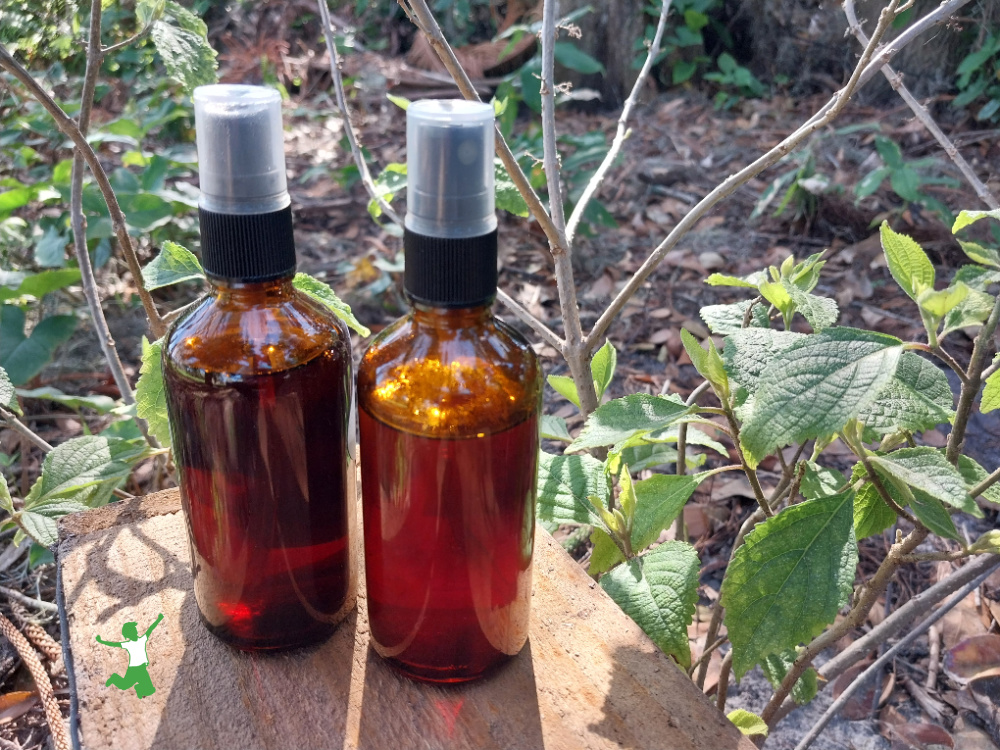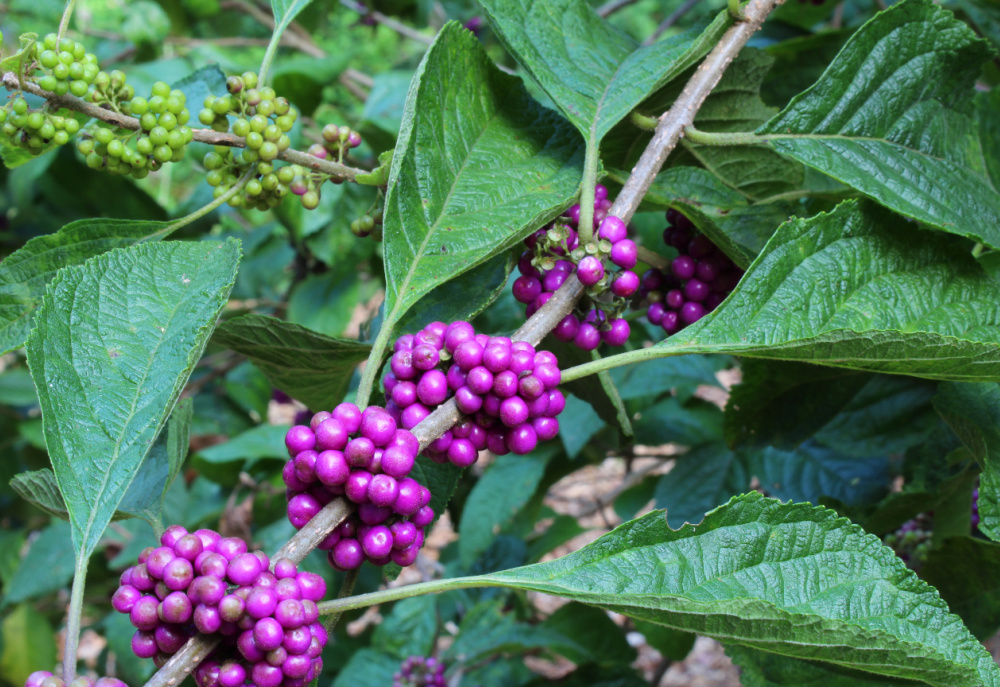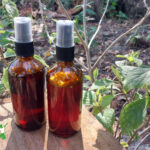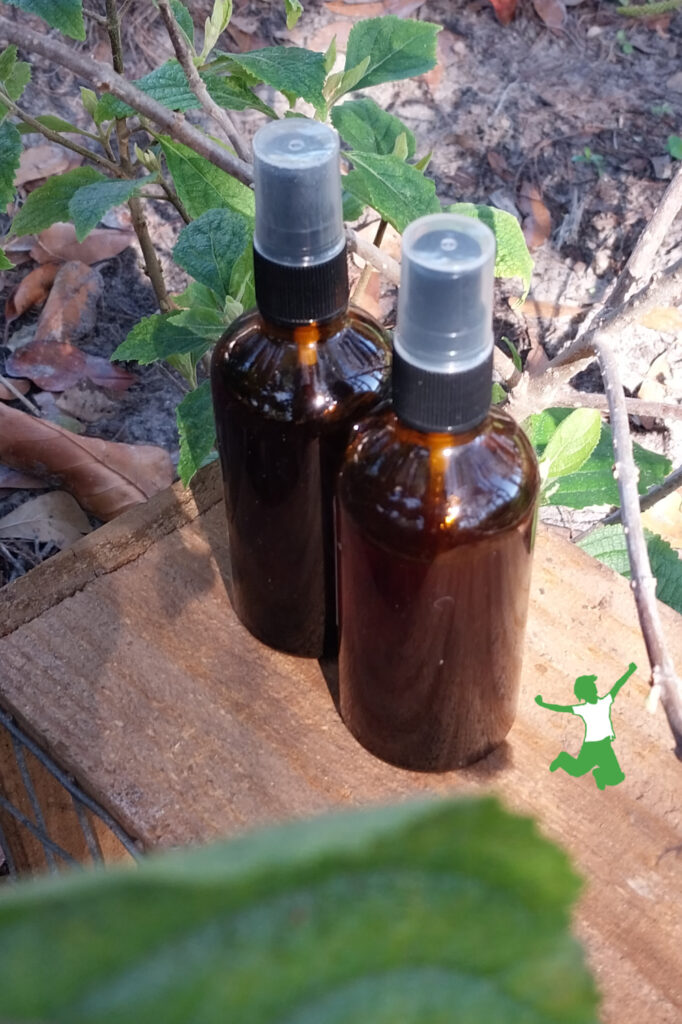A simple recipe for making bug spray using the leaves of the American BeautyBerry bush (Callicarpa Americana). A highly effective herbal blend for use as a mosquito and tick repellent.

I’ve tried a number of homemade herbal bug sprays over the years.
Living in Florida, a nontoxic repellent for insect critters is very important, particularly if you are an outdoorsy person.
My latest DIY bug spray success uses the leaves of the gorgeous American beautyberry bush.
I learned about this recipe from the manager of Wonderfield Farm, where Rogue Food Florida will be held from March 13-15, 2025. I will be a speaker at this event and am excited to see many of you there soon! If you haven’t signed up yet, use coupon HHE15 for a discount on premium or day passes!
This native shrub found across the southeastern United States, is known for its striking clusters of bright purple berries that pop against its green leaves, especially in late summer and fall.
The bush typically grows 3 to 6 feet tall, sometimes up to 9 feet in the right conditions. Once established, it is drought-tolerant and hardy during brief cold snaps.
It thrives in a mix of sun and shade—think woodlands, forest edges, or under a large tree in your backyard if you cultivate them yourself.
My American beautyberry plant grows under the shade of several large oaks. It gets morning and early afternoon sun, but mostly shade which it loves.
I discovered these gorgeous plants at a local native nursery. You can probably do the same if you live in the Southeast United States. Otherwise, you can often find seeds or young beautyberry plants online to have shipped to your door.
Grow them in containers on an enclosed patio or porch if you live in a cold climate where they can’t survive outdoors year-round.
Making a bug spray from the deep green leaves works extremely well for repelling all manner of native biting insects.
As a bonus, the purple berries are edible. They are a bit bitter on their own but make yummy homemade jam.
I’m not sure yet whether this homemade herbal spray works to repel deer flies, though it is highly effective for mosquitoes, no-see-ums, and ticks. Right now, I primarily use deer fly traps as protection.
I will find out soon, as deer fly season in Central Florida is right around the corner starting in May.


American BeautyBerry Bug Spray
Simple recipe for making bug spray using the leaves of the American BeautyBerry bush. Highly effective as a mosquito and tick repellent.
Ingredients
- American BeautyBerry Leaves
- Witch hazel
Instructions
-
Fill your food processor about half full with beautyberry leaves. Add 1/4 cup of witch hazel and blend to a leafy paste.
-
Add about the same amount of leaves and another 1/4 cup of witch hazel to the food processor and blend to a paste again.
-
Transfer all leafy paste to a quart size mason jar. It will be about half full.
-
Top up the mason jar with more witch hazel to the bottom of the jar rim.
-
Screw on the lid and leave on the counter at room temperature for two weeks. In a pinch, you can make a slightly weaker batch after only a few days.
-
Turn the jar a few times each day as the beautyberry leaves are infusing into the witch hazel.
-
Strain out the leaf matter from the infused witch hazel using a floursack cloth or fine weave cheesecloth.
-
Pour the strained beautyberry-infused witch hazel into spray bottles. Your homemade bug spray is now ready to use!
-
Store unused beautyberry bug spray bottles in a dark cabinet. They will be good for up to two years.
Here’s a great video on making American BeautyBerry bug spray. I use a slightly different method, but the visuals are very helpful to get the idea of what the process entails.









Can you clarify if the infusion time is two days or two weeks?
I do two weeks. That is the proper infusion time for witch hazel. The lady in the video does is for a shorter period of time, but she is using alcohol.
I use witch hazel as it is much milder on the skin.
Thank you Sarah. I made this and it seems to be working. I had to guess about how many leaves because I don’t have a large food processor so I used my Nutribullet and came out with 1 and a half cups of the leaf paste so I only added witch hazel up to three cups line. Also for reference, I used about 60 leaves, mostly large but some smaller.
Hi! How many leaves would you use for the witch hazel you recommended?
It depends on the size of the leaves. Just fill the food processor about half full of leaves and that will work.
Good morning Sarah – Do you know if this can be used on dogs also? My dog and I are absolutely tick magnets and it would be great to have something that works for both of us. Will you be selling any at the conference? Thanks!
I do not know if the beautyberry is toxic for dogs or not. I haven’t seen anything about this, but I would suggest double checking with a holistic vet.
Love this, Sarah, thank you! Would it work and be safe for dogs as a flea/tick repellent?
Hi Tara, I do not know if the beautyberry is safe for dogs. I haven’t seen anything about this, but I would suggest double checking with a holistic vet.
This looks great. In the video, she uses alcohol. Is that 100% isopropyl alcohol? Curious to know if anyone in the Pacific Northwest has tried growing this. Thanks.
I use witch hazel as it is much more gentle to the skin than alcohol.